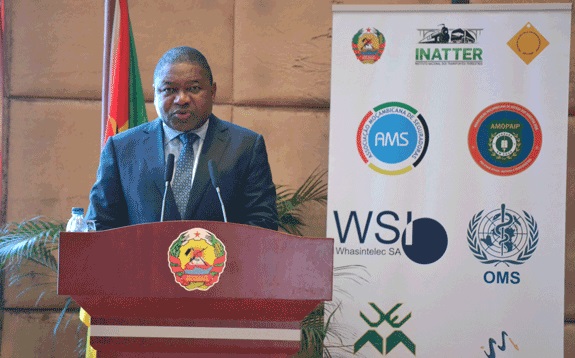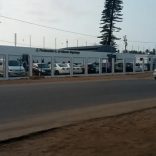Mozambique: At least two insurgents killed in clashes in Cabo Delgado - official
“We have to hold responsible those who cause this disaster” – Nyusi on death toll due to road accidents in Mozambique

Notícias
More than 10,000 people died, and a further 30,000 were injured in traffic accidents on Mozambican roads over the past six years (2011-2017).
The worst year was 2014, when traffic accidents claimed 2,040 lives. These statistics put Mozambique in fourth position in the Southern African Development Community (SADC), in terms of road fatalities, with 32 deaths per 100,000 vehicles.
President Filipe Nyusi announced these figures on Thursday, at the opening session of a National Symposium on Road Safety. The meeting was called to reflect on the causes of traffic accidents and discuss strategies for improving road safety.
“We cannot continue to watch this public calamity passively and calmly”, said Nyusi. “More than words are needed. We have to hold responsible those who cause this disaster”.
In order to understand the phenomenon, the areas where accidents occur have been mapped, with statistics on the types of vehicles involved, the days and times when most accidents happen, and their probable causes.
The findings hardly came as a surprise. Most accidents occur in the provinces with most vehicles – namely Maputo city, Maputo province, followed by Nampula and Sofala provinces. The deadliest times are the weekends between 15.00 and 21.00.
Nyusi said the statistic he found most alarming was the profile of the drivers – the people most likely to be involved in accidents are men aged between 18 and 45.
“These are people at the final stage of their academic training, and who still have a lot to give to the country and to their families”, the President added. “But because of road accidents they cease to perform their role as breadwinners, and throw their young children and other dependents into uncertainty”.
The worst accidents, those which claim most victims, are those that involve heavy goods vehicles and minibuses used as passenger transport (commonly known as “chapas”). The reports into the accidents indicate as the main causes excessive speed, dangerous manoeuvres, and driving under the effect of alcohol or drugs.
Also featuring on the list of causes are driver fatigue, the poor state of the vehicles, failure to observe the basic rules of driving, poorly maintained roads, poor road signposting, and dangerous crossing of roads by pedestrians.
Apart from the physical and psychological costs to the people directly involved, Nyusi said the accidents also have a negative impact on the health service. The damage done to walls, buildings, traffic lights, lampposts and the like struck by vehicles, also adds to the costs.
The main causes of accidents are to do with human action, said Nyusi, and so efforts to change the scenario had to be centred on changing people’s behaviour.
“We must all, without exception, accept our responsibilities”, he said. “Only through a responsible collective and individual commitment will we able to reverse the current frightening trend”.
Nobody is exempt from the struggle to reduce the number of road accidents, said Nyusi, “because we all run risks as drivers, as transporters, as passengers or as pedestrians”.











Leave a Reply
Be the First to Comment!
You must be logged in to post a comment.
You must be logged in to post a comment.